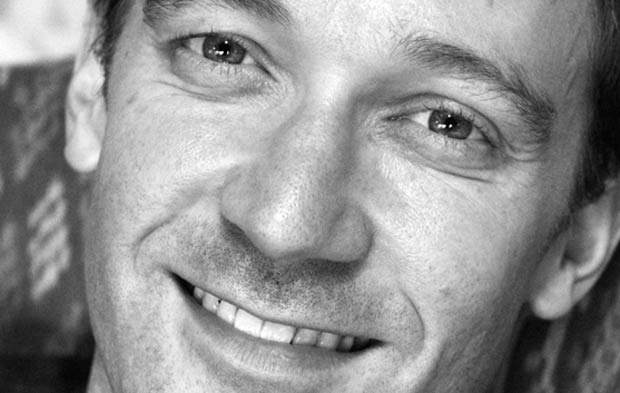
© Amber Star Merkens. (Click image for larger version)
John Heginbotham Goes Solo
After fourteen years with the Mark Morris Dance Group, John Heginbotham is now on his own. And he’s been busy. His new ensemble, Dance Heginbotham, débuted in 2012, after a residency at the Baryshnikov Arts Center. I caught them at Jacob’s Pillow, where they danced two works, Twin and Bell. Both were striking, stylish, full of quirks. [review here] The steps combined elements of various styles: ballet, tap, jigs, and cartoonish moves that seemed to reflect a wry sense of humor. Twin had darker undertones. A figure lurked at the rear of the stage; another was manhandled by his fellow dancers. “I’m attracted to creepy material,” Heginbotham recently told an interviewer. The two dances were also rigorously constructed – closely tied to the music – and highly technical.
This fall (Oct. 29-Nov .2), Heginbotham will present an evening-length work (his first) in the Fishman Space at the Brooklyn Academy of Music. It’s called Dark Theater. Last week, he told me a little bit about it.
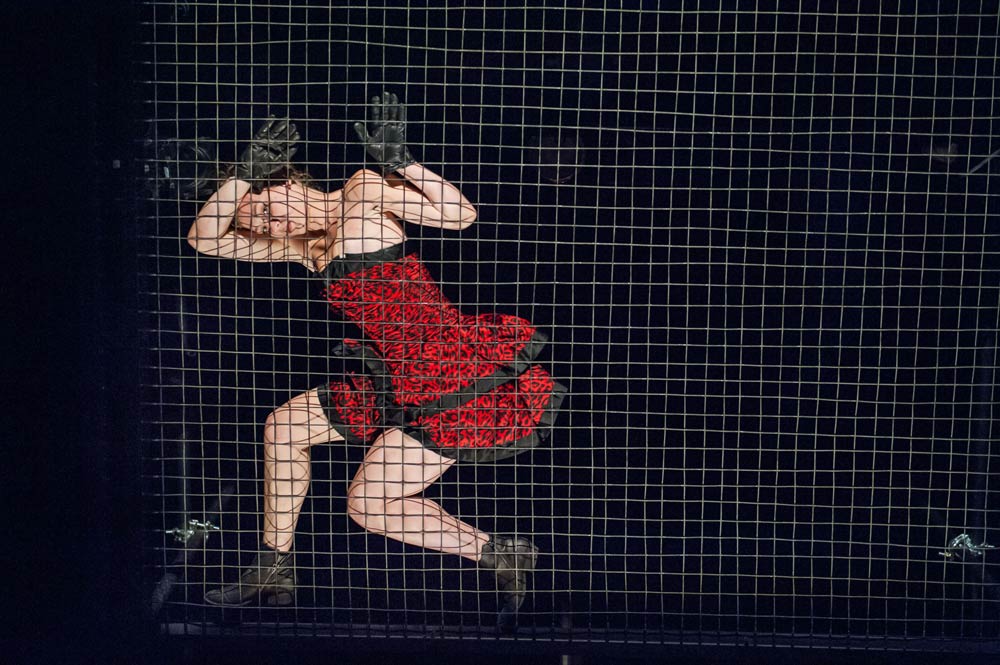
© Stephanie Berger. (Click image for larger version)
MH: When did you start choreographing?
JH: I made my first piece when I was eleven. It was about a minute and a half long. But choreography became a serious interest for me in college [at Juilliard]. I’ve always had something small going on the side, even when I was dancing. In 2007 I was asked to choreograph this rock “space opera” called Champ, a Space Opera. It was part of the New York International Fringe Festival. Champ is short for Champollion, the band, which is named after the guy who discovered the Rosetta Stone [hieroglyphs].
Champ: A Space Opera from Opera Erratica on Vimeo.
MH: When did you retire from the Mark Morris Dance Group?
JH: I retired one year ago, in 2012. The lovely people at MMDG were very supportive of me when I started to feel like I was making a transition toward choreography. Mark and Nancy helped me get set up a little bit. They recommended me for a residency at the Baryshnikov Arts Center. It was a great experience.
MH: Tell me about Dark Theater, your upcoming show at BAM.
JH: It’s the first evening-length work I’ve created for my company. It’s actually made up of two distinct components that could be separated and performed on their own.
MH: What are the components?
JH: The first part of the program is called “Cinema.” It’s based on some orchestral music by Satie – his final composition, Relâche. Relâche was a three-part ballet; part 1 and part 2 were performed live but in the middle there was a film [by René Clair]. You can actually see it on YouTube. I’m using the music for the film.
The second part is set to a selection of Satie piano pieces. A lot of them are very brief. I’m using two from Desiccated Embryos, and Vexations. Vexations is only three lines long, but Satie implied that the performer might want to perform it 840 times. It’s not specifically stated that you must, but why not? John Cage did it. That part of the program will be played live, by the pianist Yegor Shevtsov. The first part is recorded.
MH: What drew you to Satie?
JH: I listened to a lot of music. I love Dada art, so I thought, “I’ll just type the words ‘Dada’ and ‘ballet’ into Google.” Relâche came up. It’s about half an hour of music. Then I thought, “what am I going to do with the rest?” I didn’t know very much about Satie. I had never looked at a Satie score. The pieces have these odd little comments all over the place. That has inspired some of what happens in the dancing. His mind is so creative and strange, and I was interested in that tone. It’s so playful.
MH: Did the fact that Mark Morris had used this music, in Pas de Poisson (1990), inspire you in any way?
JH: No, and in fact, it was not until I had listened to the music several times that I realized it was the score for Pas de Poisson. I briefly considered not using it, but then I figured my version would be different enough from Mark’s to warrant an attempt. Having said that, Pas de Poisson is a piece I LOVE. Mark revived it very briefly while I was in the company, and the few times I saw it from the wings, I loved how strange and humorous it was.

© Amber Star Merkens. (Click image for larger version)
MH: Does Dark Theater have a plot?
JH: One of the piano pieces I’m using is one of Satie’s Descriptions Automatiques. That piece is sort of a drone, and in the midst of it there are these interruptions, and all of the interruptions in the score have notes and titles. It has sort of a nautical theme. When I look at it, I see all the nautical details, but I don’t think anyone who doesn’t know that already would say, “oh, that’s clearly taking place on a ship.” But for me it is.
MH: Do you make references to René Clair’s film from Relâche?
JH: That is a complicated question. Yes, there are some images from the film that appear in the show, however, the most relevant one actually doesn’t appear in “Cinema” – it’s in the piano pieces. In the film there is a ballerina, shot from below, and that image has some relevance later in the show.
MH: How many dancers did you use and are you in the piece?
JH: Six. I’m not in it. I have to say I like sitting outside and being able to see what’s happening. I’m happy to not have my attention divided that way.
MH: Are there other production elements in the show?
JH: Yes, there is a set. The set is based on a piano. We’re going to do something with the piano which I think is going to be pretty cool.
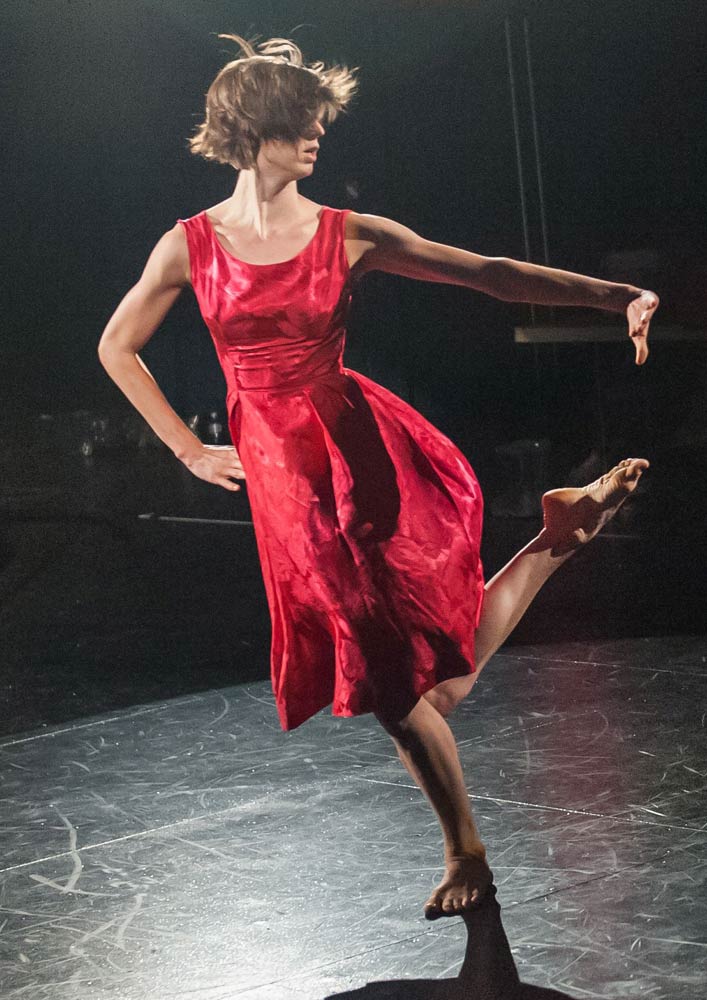
© Stephanie Berger. (Click image for larger version)
MH: Why did you call it Dark Theater?
JH: The title is a take on the English translation of the word “relâche” – “no performance”, “show cancelled,” “theater dark” – from which Satie’s ballet took its name. I also called it that because it is my intention that the piece come across as sometimes dark and eerie.
MH: Is the style of the piece different from what you’ve done before?
JH: I’m aware of certain movement patterns or habits that seem to recur in my work, and certainly those elements exist. I don’t think anyone who’s familiar with other things I’ve done would see this and say “this is 180 degrees different.” I would say there is a much stronger ballet element, and that’s a stylistic departure. A part of the show is ballet. And that’s because of the original Relâche. Even though I’m not using parts one and two of Relâche, the ballet is in there because Satie wrote a ballet.






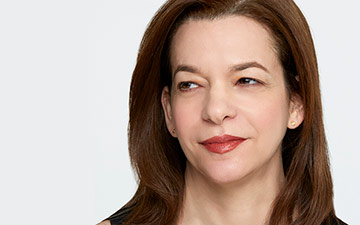

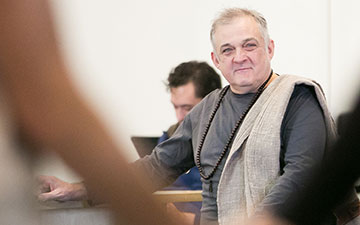

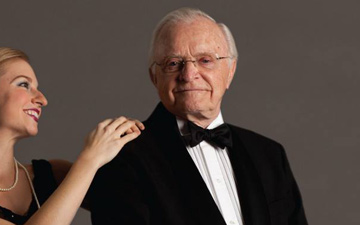
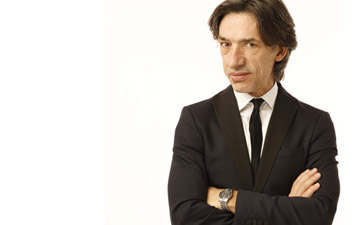





You must be logged in to post a comment.